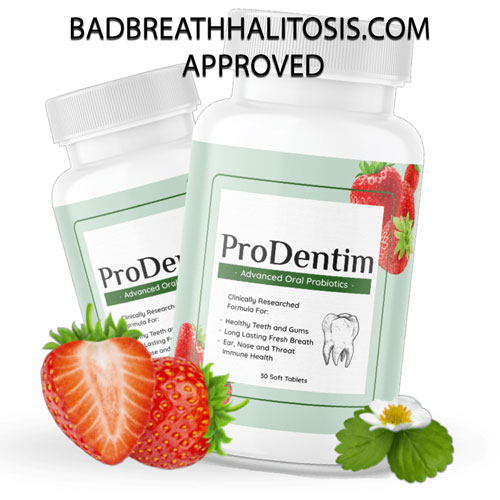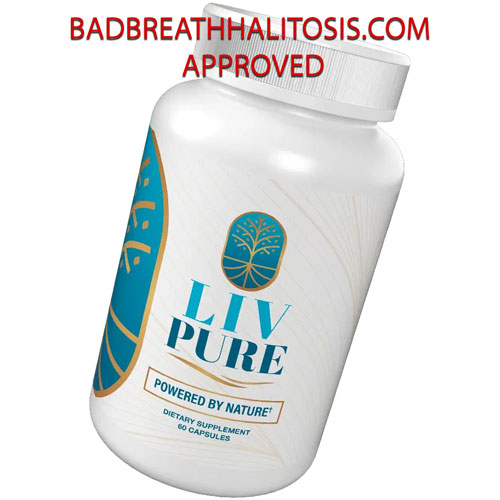Problem :Possible cause or source of malodor
Odor after fasting, dieting, sleeping, taking medications, prolonged speaking, exercise: dryness in the mouth, insufficient saliva flow
Gums bleed and/or smell: gum problems, poor cleaning between teeth
Odor upon talking: postnasal drip on back of tongue
Odor at onset of menstrual cycle: swelling of gums
Small whitish stones with foul odor appear on tongue : tonsilloliths from crypts in tonsils
Taste or smell of rotten fish: trimethylaminuria (rare)
Odor in denture wearers: dentures kept in mouth at night or not cleaned properly
Odor from nose: sinusitis, polyps, dryness, foreign body, hindered air or mucus flow
Bad taste all day long: poor oral hygiene, gum disease, excessive bacterial activity on tongue


Problems and possible causes of BB
Abstract:
Objectives
The aim of this study was to describe the clinical features of a cohort of patients suffering from bad breath observed at the Halitosis Unit of the Department of Stomatology – University of Milano. Moreover, the diagnostic and the short-term therapeutic approach to these patients has been evaluated. Methods
The clinical chart of patients have been reviewed and relevant data collected to be analyzed with an Apple Powerbook G4 PC. Patients complaining of bad breath were admitted to the halitosis unit. At first visit they were submitted to (i) clinical interview (ii) oral and periodontal examination (iii) tongue coating index recording (iv) hedonic breath testing (count-to-twenty test, wrist-lick test, spoon test, floss test) (v) measurement of oral VSC concentration with Interscan Halimeter®. By 1 week patients were submitted to professional prophylaxis and oral hygiene instructions with specific attention to tongue brushing. Patients were then prescribed with no-alcohol chlorexidine 0.2% for 30 s mouthrinse plus 30 s gargle twice a day after brushing. At the control appointment after 2 weeks the tongue coating index, the hedonic tests and the oral VSC measurements were recorded again. Results
One hundred and nine patients (F = 52; M = 59) were observed and treated at the halitosis unit in the period 2000–2002. Thirteen patients were halitophobic without any objective evidence of bad breath whereas 14 had causal ENT diseases. Of the remaining 82 patients with halitosis from oral causes, 60 showed no evidence of active periodontitis. In this latter group a significant reduction of the hedonic test scores and of the oral VSC concentration was found in 85% of patients. Eighty percent also declared a subjective improvement. Conclusions
The clinical protocol described was effective for the diagnosis and treatment of oral halitosis; the treatment with chlorexidine 0.2% was successful in the short-term control of the condition. Acknowledgement
This work was supported by the scientific fund FIRST 2000 – UNIMI.
Document Type: Research article
DOI: 10.1111/j.1601-0825.2005.01105_37.x
Objectives
The aim of this study was to describe the clinical features of a cohort of patients suffering from bad breath observed at the Halitosis Unit of the Department of Stomatology – University of Milano. Moreover, the diagnostic and the short-term therapeutic approach to these patients has been evaluated. Methods
The clinical chart of patients have been reviewed and relevant data collected to be analyzed with an Apple Powerbook G4 PC. Patients complaining of bad breath were admitted to the halitosis unit. At first visit they were submitted to (i) clinical interview (ii) oral and periodontal examination (iii) tongue coating index recording (iv) hedonic breath testing (count-to-twenty test, wrist-lick test, spoon test, floss test) (v) measurement of oral VSC concentration with Interscan Halimeter®. By 1 week patients were submitted to professional prophylaxis and oral hygiene instructions with specific attention to tongue brushing. Patients were then prescribed with no-alcohol chlorexidine 0.2% for 30 s mouthrinse plus 30 s gargle twice a day after brushing. At the control appointment after 2 weeks the tongue coating index, the hedonic tests and the oral VSC measurements were recorded again. Results
One hundred and nine patients (F = 52; M = 59) were observed and treated at the halitosis unit in the period 2000–2002. Thirteen patients were halitophobic without any objective evidence of bad breath whereas 14 had causal ENT diseases. Of the remaining 82 patients with halitosis from oral causes, 60 showed no evidence of active periodontitis. In this latter group a significant reduction of the hedonic test scores and of the oral VSC concentration was found in 85% of patients. Eighty percent also declared a subjective improvement. Conclusions
The clinical protocol described was effective for the diagnosis and treatment of oral halitosis; the treatment with chlorexidine 0.2% was successful in the short-term control of the condition. Acknowledgement
This work was supported by the scientific fund FIRST 2000 – UNIMI.
Document Type: Research article
DOI: 10.1111/j.1601-0825.2005.01105_37.x
no alcohol
this is an important study; chlorhexidine is one of the few treatments that have been effective for chronic halitosis; problem was there was alcohol in it up until a couple years ago; this made it so many people just got worse.
Now, there is chlorhexidine without alcohol. Though it still has side effects; teeth staining (that can be removed by a dentist) it is a real shot that some with serious problems should undertake. There have been reports it's not as effective without the alcohol, but I think we should try that ourselves.
And I honestly don't know what else they've added that might make it undesirable, if anything.
I'm not sure if it's available yet in the US; last time I looked; I couldnt get it.
I don't think I've talked to anyone who has tried it. I don't know myself what it could do for me. Good thing to look into though.
If you find out where to get it; let the group know; it's a good experiment. Laura
Now, there is chlorhexidine without alcohol. Though it still has side effects; teeth staining (that can be removed by a dentist) it is a real shot that some with serious problems should undertake. There have been reports it's not as effective without the alcohol, but I think we should try that ourselves.
And I honestly don't know what else they've added that might make it undesirable, if anything.
I'm not sure if it's available yet in the US; last time I looked; I couldnt get it.
I don't think I've talked to anyone who has tried it. I don't know myself what it could do for me. Good thing to look into though.
If you find out where to get it; let the group know; it's a good experiment. Laura
I use a chlorhexidine mouthwas called Corsodyl. It works by attacking both gram negative and gram positive bacteria in the mouth. However it is less effective against the gram negative bacteria which is suppose to be the bad breath bacteria.
The brand I use contains alcohol, side effects can include staining of teeth and loss of taste. I havent experienced these.
However there is a new brand out called Curasept, this one is not suppose to have any alcohol or side effects.
I get 2-4 hours relief from this, but the bb bacteria always comes back, and it can leave ur tongue and mouth really raw.
It is available over the counter here in europe, but Im sure you could get it on internet without much hassle.
It will give u relief but not cure.
It is worth trying if u have not tried it before though
The brand I use contains alcohol, side effects can include staining of teeth and loss of taste. I havent experienced these.
However there is a new brand out called Curasept, this one is not suppose to have any alcohol or side effects.
I get 2-4 hours relief from this, but the bb bacteria always comes back, and it can leave ur tongue and mouth really raw.
It is available over the counter here in europe, but Im sure you could get it on internet without much hassle.
It will give u relief but not cure.
It is worth trying if u have not tried it before though
